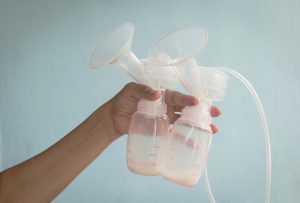
Near the end of your pregnancy you might find yourself counting down the days until you meet your baby.
For most pregnancies, labor will begin naturally between the 39th to 41st week of pregnancy. However, for some women contractions do not occur on their own. This is where the induction of labor begins. Doctors can induce labor using different medications, techniques, or even a combination of both. The goal is to stimulate uterine contractions to help thin out the cervix, and to bring about labor.
Bringing About Labor Naturally
When it comes to natural remedies for labor there are many different wives tales and legends that can supposedly help move things along. Some are quite harmless, others may have some slight side effects or risks, and some may not work at all. However, there are quite a few women who swear by some of these natural methods when it comes to bringing labor on.
We have put together a list of things that you can try to help ready your body to bring your little one into this world naturally. It is best to wait until you are 38 weeks pregnant, full term, before you try some of these things at home.
Put Those Sheets to Use
For many women, sex has helped to induce labor. One of the many reasons that is due to the hormone oxytocin that is released during sex. This hormone can help to cause orgasms that have been shown to increase uterine activity within healthy pregnant women. Another way that sex helps to induce labor is due to semen. Semen is a natural source that has a higher concentration of prostaglandins. These prostaglandins are known to help ripen the cervix to get ready for labor.
While sex is safe during a healthy pregnancy at full term, make sure to avoid it if your water has broken. As sex can cause an increased risk for infection.
Nipple Stimulation
 Stimulating your nipples can help to cause your uterus to contract. Which in return can bring about labor. Nipple stimulation brings about the hormone oxytocin which causes milk to produce and the uterus to contract.
Stimulating your nipples can help to cause your uterus to contract. Which in return can bring about labor. Nipple stimulation brings about the hormone oxytocin which causes milk to produce and the uterus to contract.
You can stimulate your nipples on your own, ask your partner to help manually stimulate your nipples, or you can even try to use a breast pump. Do this for 15 minutes at a time for one hour per day. Research shows that this process may take a few days to help induce labor as your oxytocin levels will be the highest on day three. Keep in mind that you should not attempt this before being 39 weeks pregnant to help avoid complications that can occur with preterm delivery. Keep in mind nipple stimulation may create strong and painful contractions when used to induce labor.
Evening Primrose Oil
Many midwives suggest this to their pregnant patients. This herb has been known to help thin the cervix and dilate it in order to prep for labor. Evening primrose oil can be taken in either oil capsules, or by rubbing the oil onto your cervix throughout the last few weeks of pregnancy. You can take the capsules orally or insert them into your vagina.
Make sure to discuss using evening primrose oil with your practitioner before you attempt this. As women with placenta previa should avoid this all together.
Castor Oil
Castor oil is a laxative. This old wives tale is a tradition passed on through generations that say stimulating your bowels can help to irritate your uterus, thus can cause it to begin contracting. Castor oil is known to cause spasms within the intestines to begin the stimulation.
Keep in mind that if you are not showing signs of labor, then taking castor oil may just result in diarrhea and not the beginning of labor. Again we suggest discussing this method with your practitioner before you attempt it.
Acupressure
This age-old practice involves putting pressure onto specific points of the body in order to stimulate uterine activity. You use your fingertips, or your partners, to use two pressure points that may induce labor. One spot is the webbing between your thumb and index finger. The other is inside of your leg about four finger-widths above your ankle bone.
Pineapple
 The core of a fresh pineapple contains an enzyme called bromelain. This enzyme helps to break down the proteins within tissue. The theory behind pineapple for induction is that the bromelain makes its way to your cervix and helps to breakdown the tissue. This then causes the cervix to soften and then stimulate labor.
The core of a fresh pineapple contains an enzyme called bromelain. This enzyme helps to break down the proteins within tissue. The theory behind pineapple for induction is that the bromelain makes its way to your cervix and helps to breakdown the tissue. This then causes the cervix to soften and then stimulate labor.
There is no strong evidence to support this theory, but there is no harm in enjoying some pineapple at full term!
Dates
Dates contain a high percentage of fats and carbohydrates, as well as 15 types of minerals and salts, proteins, and vitamins. Studies show that this is one of the best foods to eat to prepare for childbirth. It is best to start eating dates every day once you hit your 36th week of pregnancy to help prepare the body for a natural labor.
Try eating 60 – 80 grams of dates a day to help increase cervical ripening and reduce the need for a medical induction. Studies have shown that dates can even help with postpartum blood loss. However, if you studies have not been conducted on women with gestational diabetes at this time.
Red Raspberry Leaf
Many midwives will recommend drinking red raspberry leaf tea as you near your due date. This will help tone and strengthen your uterus to prepare for childbirth. Toning your uterus will help with ripening and dilating your cervix.
Things to Keep in Mind
Before you try anything to induce labor discuss things with your doctor. While some of these have been shown to induce labor within women, it may not work for everyone. Sometimes nothing can speed up mother nature in her course.


